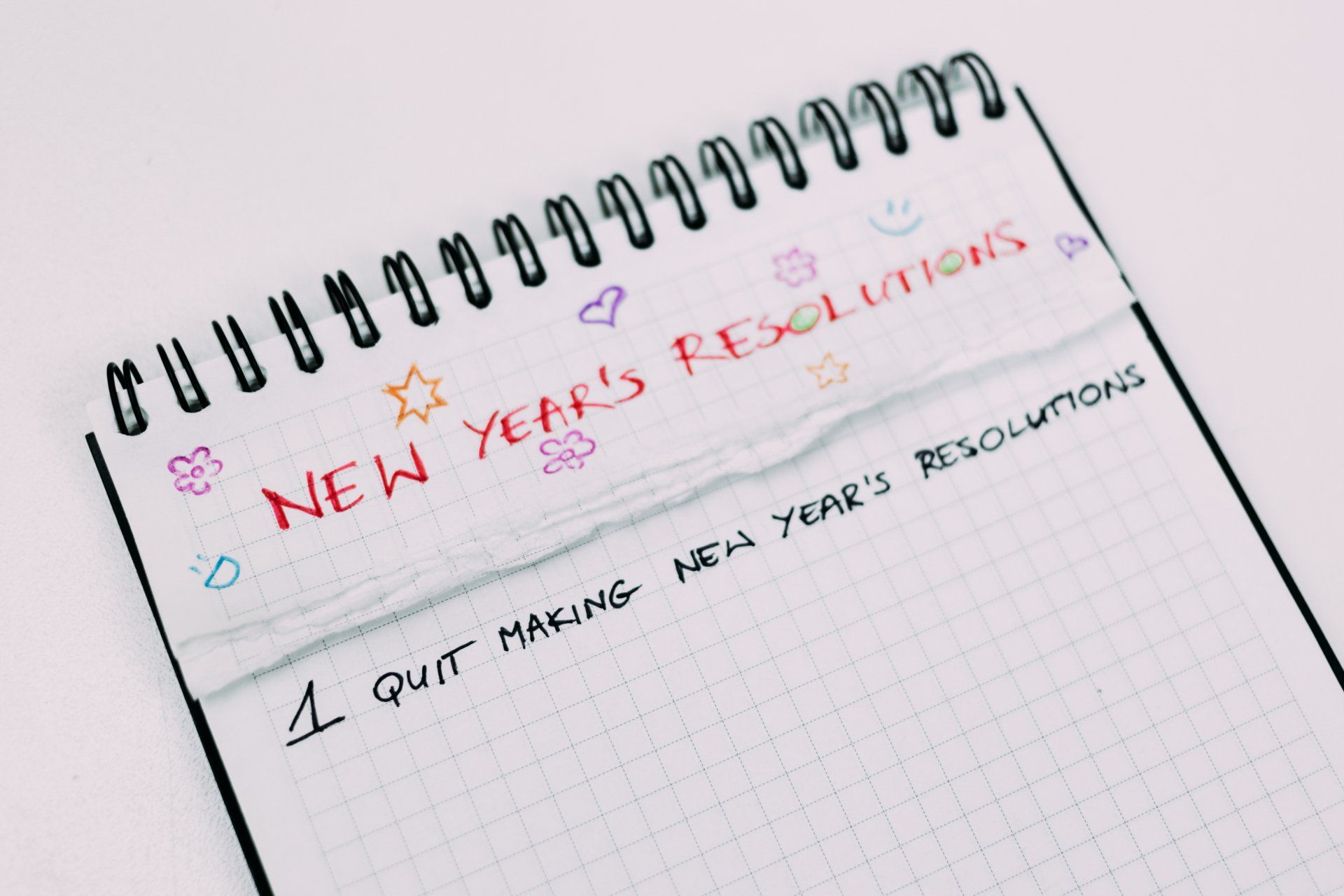Christine Petrik, LCSW
BLOG
Blog

By Christine Petrik, LCSW
•
18 Sep, 2023
Many partners wish their spouse would nag less, pick up after themselves all the time, go out on a date night, stay at home more… The entreats are endless. It's tempting to believe peace and enjoyment will be sustained if only your partner would change their behavior. The problem is those requests don't restore the underlying desire for a secure and enjoyable connection. It's like rearranging the furniture when your walls are cracking. Band-Aid approaches will not do. You've heard the advice: you need to acknowledge a problem before you can productively resolve it. It's true; naming and accepting what's not working is the first step. All too often, with good intentions, couples jump to "fixing" via external deviations. A more reparative, lasting approach requires another crucial phase: discovering and accepting the situation at a root level. So, how do you and your partner journey on a road you haven't been down before? Or worse, dare to try that trip again? Start by saying YES. If that doesn't feel possible, decide you are willing to be willing to explore TOGETHER . Remember Einstein's advice: until you do something different than you've done before, you'll continue to get the same results you've already gotten. The good news is the more you practice willingness, the better you'll get at it because willingness is a learned and practiced mindset. It enables you to be open to change, face challenges, and experience more possibilities. Behavior change by itself is fleeting if it's done without compassionate curiosity and safely communicated between partners. THEN follow up with smart solutions. Decide to be willing to get started. Here are FIVE things that help strengthen your Willingness muscle: PAUSE: when you first notice those bodily sensations of resistance coming from you or your partner, don't run, attack, or hide. Instead, pause and breathe. Heightened reactivity (fight, flight, freeze) rips away your ability to maintain a calm presence and self-control. REMEMBER THE BIG WISH: Remember the big picture, the relationship you wanted and once believed in. Visualize it and be willing to tolerate some struggle so you can re-birth it. Reflecting on that goal draws you back to your core values and behaviors that matter most. FACE IT: Change is scary sometimes; it requires relinquishing control over what might happen and certainly over others' behaviors, but growth will not occur in a stranglehold. Face the fear, breathe more, stay flexible, and pace yourself. Beware the resistance monster. Listening to that voice may seem like it will keep you safe, but it only keeps you trapped. SEEK HELP & INSPIRATION: You don't need to reinvent the wheel. Many, many, couples have come before you. Countless have successfully navigated these roads and can show you the way. Surround yourself with couples who inspire you, and don't hesitate to reach out for professional help even before the damage is severe. Enjoy a concentrated double dose of support and inspiration by attending a couple's workshop or retreat. Get a two-in-one! CELEBRATE THE VICTORIES: Every time you or your partner have overcome the resistance barrier and softened into more willingness, celebrate! That's a huge victory. Positive reinforcement will boost your desire to keep going. Willingness is a journey. It asks you to show up, lower your defenses, and practice self-acceptance and acceptance of your partner. The commitment of time, energy, and resources to change is ten-fold. We hope to see you on your journey. Last thing, ask yourself, what are you willing to do right now? DO IT!

By Christine Petrik, LCSW
•
14 Jul, 2023
The fragrant Linden trees in Manhattan’s Riverside Park have finished their blossoming cycle for another year. Around mid-June thru early July every year, you can count on that exquisite aroma to drift up from the park, aided by a western breeze off the Hudson River. The evening, as the city quiets down for the night, is my favorite time to enjoy an aromatic walk along the streets on the Upper West Side. Next up, plenty of sun and surf at the Jersey Shore. July is a fabulous time to be in Cape May. David and I are very fortunate for our unencumbered access to both New York and Cape May, but admittedly, transitioning between those spaces is something I do more slowly. Similarly to a foreign car with a slightly constricted stick shift, sometimes my internal clutch doesn’t switch gears as smoothly as I’d wish. But, when it happens, it’s lovely. I used to wish the ocean water, which is so invitingly warm at the end of August through September, could be tepid at the start of the summer versus the end. That way, the transition wouldn’t be as difficult. I could handle the frigid cold water by summer’s end if I had some weeks of gradual turn. It takes a bit more courage to get wet in July. I now understand the opportunity and wisdom in meeting the ocean temperature where it’s at. The moment comes when I just have to plunge in. I’m not alone in this unintended hesitation to let go of one space and fully embrace another. Many people I see in my practice share a measure of this anxiety, often stemming from a perceived need for control. I witness similar trepidation while working with people in transitional periods in their romantic partnerships. Forging into new territory together is often scary. Whether it’s singles moving their relationship toward commitment, couples becoming parents, or experiencing the empty nest phenomenon – change disrupts. There are countless times when change comes along and upsets the safety of the status quo. Then, look out – our inner alarms go off! We may think we can’t handle it. We may think we won’t know what to do. Hesitation is understandable. Overthinking is unproductive and detrimental. Overthinking consumes a lot of mental energy. It can lead to increased anxiety, exhaustion, self-doubt, and depression. Just as bad, avoiding transition via overthinking increases relationship stress. Partners and loved ones often misinterpret overthinking for resistance, furthering the conflict. Impulsiveness is not what I’m recommending, but there is a lot of space between hasty action and inaction. Recently, as I was trying to figure out something different to do with the zucchini from the garden in Cape May, I watched the 2022 television series Julia, on HBO/Max. It stars the talented British actress Sarah Lancashire, (Last Tango in Hallifax). For me, the story is more about the joy of relationship than food, and worth watching. If you’re also a Julia Child fan, it’s a must-see (personal opinion). I grew up watching my mother watch the real Julia’s PBS cooking show, The French Chef. Mom credits Julia Child with teaching her how to be a better cook. I suspect my mom would have been an excellent cook either way; she’s a natural. I get my love of French food from them both. In the fictional Chocolate Souffle episode, the writers of the show took liberty with what Julia actually said, but it made great sense to me. Julia fans have always understood that in her Masterclasses, Julia often bestowed lessons about life, not just cooking. The character Julia sums up how straightforward this delicate delight is to make by saying, " I have a secret to tell you. You’ve known how to make a chocolate soufflé all along. All you have to do is plunge in. And I’ll tell you another secret. That’s the key not only to the kitchen, but to life itself. ” If you’ve been wondering whether or not one of our relationship workshops is suitable for you, view one of our FREE Introduction videos. It’s a gentle way to dip your toe in without a full commitment. Go on, just plunge in!

By Christine Petrik, LCSW
•
01 May, 2023
Ah, Spring! It feels like it’s finally arrived here on the Northeast Coast of the U.S. David and I love all four seasons, but never at the expense of an abbreviated one. We’re fortunate to live in a region where we experience them all. Our gratitude is most potent right before the next new season arrives. Toward the end of one season, a longing begins for the next. It’s like being on a pleasant vacation. Although you may have had a lovely trip, you know it’s time to leave when you’re ready and want to return home. As I write this, my wonderful husband is preparing our vegetable garden for planting. He takes the tasks of weeding, fertilizing, and tilling very seriously. It’s one of the many things I appreciate about him. So, what does this have to do with a romantic partnership, you might be thinking. After all, it’s why you’ve chosen to read this newsletter – thank you for that. Well, what if your relationship would dramatically benefit by being in even more harmony with Nature’s ebbs and flows of seasonal opportunity? What if you didn’t have to work so hard to create the relationship of your dreams but instead focused on working smart? And what would that look like? It would probably mean less pushing your agenda and more listening to what is trying to emerge. For us, Spring is an opportunity to reap the benefits of RE. There are plenty of Re’s to pick from. Recognize, Release, Rewire, Recommit, Revive, Repair, Renew, Rebirth, Reinvest , and of course, Redo . Feel free to add your own! So, what can THIS Spring offer you and your relationship? Below is a slightly deeper dive into three biggies to get you started. Re cognize what is happening. You’ve been triggered. Even if you feel it was your partner who was activated first, you’re reacting to their reaction. One of the best ways to recognize that is to notice how your body signals to you. Observe the physical signs of mental distress. Are you experiencing bodily agitation, heart racing, shaking, and muscle tightening? Your body is uniquely equipped to alert you of perceived dangers. You’ve been activated into vigilance. Consciously acknowledge to yourself that you’re ready for war or ready to flee. Re lease what doesn’t work. Dare to set down your armor and let go of needing to be right. Loosen those defenses you thought would keep you safe but only block you from real love. Winter comes and goes, allowing things to die off. You can leave behind the things that no longer serve your relationship too. You have a big enough task catching those pesty weeds when they poke up. Re commit to your dream, vision, and vows. Decide what you want to grow more of in your relationship and how to make it healthier this season. Your attention and commitment are required. Re do by taking thoughtful action. Make a plan, write it down, and decide how you’ll get there. Rarely do we do things perfectly, but each time you try again, you’re bringing more wisdom and experience. What do you need to do, and what don’t you need to do? Neither neglect the necessary care nor obsessively over prune. Lots of fresh air and sunlight do wonders on their own. Happy Spring!

By Christine Petrik, LCSW
•
23 Mar, 2023
Originally published on YourTango.com Just about anyone in a relationship can recall a time when they got into a huge fight with their partner. Words were said — or maybe even shouted — and tempers flared. You didn’t talk to each other for hours, or even days, in some cases. Afterward, it might have felt like there was a vast canyon between you and your spouse that took a lot of time, effort and energy to heal. In some cases, however, the argument — and the wound — remained, and now it’s just a problem stuck between you that you never talk about because it’s so sensitive. Arguing is normal in every marriage, but there are ways you can learn how to communicate effectively as a couple about relationship problems that are both smarter and healthier for your relationship. The key is using Imago relationship therapy-based communication skills to create a safe space for effective communication with your partner. In Imago therapy, there’s an idea about marriage that there's a space between you and your partner where your relationship "lives." When there’s a divide there because of a fight or an issue you can’t resolve, it means that your relationship isn’t healthy. How can it be, when it’s got a proverbial hole right in the middle of it? Learning Imago-based communication skills for how to approach difficult conversations — even over a topic you’ve argued about a thousand times before — can keep you both from getting hurt feelings and pushing each other away in the end. It will help make sure that the space between you and your partner, where your relationship exists, will be well-protected and strong against any future arguments that may arise. Here's how to communicate effectively about relationship problems using Imago therapy-based communication skills — without pushing each other away: 1. Recognize when the time isn't right. Timing is crucial in deciding when you should try and sit down to discuss any issues with your spouse. If you approach while they’re trying to write an urgent email or they’re not feeling well, then chances are good you’re not going to get their best, most attentive selves. One of the easiest ways to circumvent this problem is to ask if it’s a good time for them to talk, or even to make an “appointment” where you and your spouse agree to sit down, shut out distractions and discuss the situation, even if it means holding off until tomorrow. By reaching out and creating this time together, you’ll make sure that you’re both being respected, you’re on the same page, and nothing is cutting into your important discussion. You also won’t get distracted by another task you need to take care of. Being able to provide your attention fully to the topic will also cut down on arguing, confusion, or misunderstandings. Choose when to make your case, tell your partner you have something important you’d like to discuss with them, and then settle on a time that works for both of you. 2. Use “I” language instead of "you" language. No one wants to feel as though they’re being attacked in a conversation. And even if the anger or hurt is completely justified, there are ways to discuss the problems calmly and without accusation. After all, you don’t really want it to escalate into a fight — you just want to get your point across. Using “you” language like, “You shouldn’t have done that,” or “You upset me, ” will quickly make your partner feel as though they’re coming under fire. Their defenses will raise, they’ll get upset, and they may shut out your argument, no matter how valid it is. When approaching your spouse, use “I” or “me” language, instead of “you" for more effective communication based on Imago therapy techniques. “You made me feel stupid when you corrected me in front of my friends,” becomes, “When you corrected me in front of my friends, it made me feel stupid.” “You were mean when you told that joke about me,” becomes, “I didn’t like it when you told that joke. It hurt my feelings.” By approaching the conversation gently and without accusation, your partner will be more open to understanding where you’re coming from, how you feel, and be less likely to get defensive and feel like they have to prepare for a verbal assault. 3. Own what you’ve done wrong in the past. In your relationship, it’s likely that one of you is going to be the one who withdraws from conflict, or “minimizes” it, while the other doggedly pursues or “maximizes” it. Each of you will have a default behavior when it comes to resolving conflict. The minimizer will withdraw when the maximizer becomes “too emotional”, whether it's due to anger or just being upset in general. This is an unhealthy way of communicating that will create an imbalance in your relationship, where neither partner feels safe to talk and doesn’t feel truly heard. It limits your ability to share your true self and makes you both feel stunted and unsupported. If you can't talk to your partner because they withdraw, or they feel they can't talk to you because you get too emotional over it, you'll never be able to resolve differences and will instead resort to stuffing problems aside and growing resentful over their inability to hear you. Acknowledging your role in previous arguments is a wonderful way to take responsibility and address it, so that your partner knows you’re trying to make a change for the better. You can do this when you approach your spouse by saying, “I know I’ve said this to you before, and you’re probably tired of hearing it, but I want to try again in a very different way. Can we talk about it?” You can also admit that you know in the past your words may have come off as accusatory or sounded like you were complaining or yelling. Owning your part in the conversation — and your past behavior — will give your partner the chance to drop their defenses and really listen to what you want to say. 4. Understand it's not just what you say, but how you say it. In the movie Three Men and a Baby, there’s a scene where Tom Selleck’s character is reading the violent details of a boxing match to baby Mary in a soft, gentle tone. One of the other characters comes in and asks, “What are you reading to her?” to which he replies, “It doesn’t matter what I’m reading; it’s the tone.” And while this was clearly done for laughs at the absurdity of a boxing match being a bedtime story for an infant, there is quite a bit of truth in the words. What you say may have less impact on a person than how you say it, no matter how old they are. There are many theories about the percentage of speech that’s derived from body language, but experts have estimated that as much as 60 percent of communication is in non-verbal cues, like your posture, facial expressions, and eyesight. What that means is you can say the same thing in very different ways, and the way your spouse interprets it could change based on how you’re behaving — not just what you’re saying. When you have something to discuss with your spouse, pay attention to your body language and tone. Say your piece kindly, without anger or intent to shame your partner. Make sure you‘re not being stiff, showing anger through your movements, or jabbing fingers when you’re trying to make your point. “It would really mean a lot to me if you could start helping with the dinner dishes,” might sound one way if you make eye contact, posture yourself openly, and speak kindly. On the other hand, that same statement can take on quite a different connotation when your voice is clipped, your body is angled away, and your foot is angrily tapping on the floor. The truth is that no long-term, lasting relationship can exist without occasional arguments, disagreements, and differences of opinion. You and your partner view the world through two unique sets of ideas and beliefs, so these kinds of discussions are healthy and normal. Arguing can make you feel like you can’t be honest with your spouse, but sharing your truth is tantamount to establishing and keeping the intimacy in your marriage alive. You must be able to speak with each other about your needs and share your deepest, truest self without worrying that you’ll be hurt for it. By employing these simple tips in your marriage, you can make sure that you’re both able to approach and speak to one another openly, honestly, and with trust so that you don’t feel at odds no matter what the topic happens to be.

By Christine Petrik & David Green
•
01 Feb, 2023
Many folks experience a good deal of self-imposed pressure to be sexy or seductive with their partner on Valentine’s Day. It can be overwhelming and invoke anxiety – a passion killer. This Valentine’s Day we’d like to share some advice from Gabriel Medina. In his article, Self-Awareness & Body Language Medina describes the importance of confident body language in the art of successful seduction. The writer also suggests a whopping 93% of communication is non-verbal. That might be overestimated, but whatever the actual percentage, non-verbal communication is paramount. In his article, Medina highlights 10 ways you can improve your self-esteem, boost confidence and be just plain happier by some body language self-awareness. 1) Smile and laugh more often. 2) Take up more room. 3) Relax your shoulders. 4) Make eye contact. 5) Use your hands. 6) Increase proximity and avoid obstacles. 7) Watch your facial expressions. 8) Improve your posture. 9) Avoid crossing your arms or closing off your body. 10) Think before you speak. We'd like to suggest adding this to Medina’s recipe for seduction success: Apply all 10 tips at once . That's right; to send a clear message that you're interested - here's how you can seduce him/her with uber confidence! 1) Instead of Smile and laugh more often , grin and use a naughty giggle. 2) Don’t just Take up more room, own the space. 3) Relax your shoulders, YES – relax your shoulders. 4) When you Make eye contact , softly gaze into their eyes, then wink. 5) Use your hands – Use your hands, fingers, feet, toes…. 6) Instead of Increase proximity and avoid obstacles , ease in and out of their space. 7) Instead of Watch your facial expressions, create facial expressions that convey delight. 8) Improve your posture. Spine straight, shoulders back, chin up and maybe even arch your back, ever so slightly! 9) More than Avoid crossing your arms or closing off your body, DON’T close off your body! 10) Instead of Think before you speak , pause then intentionally deliver a whisper. HAPPY VALENTINE'S DAY! Christine Petrik & David Green

By By Christine Petrik & David Green
•
20 Jan, 2023
Beauty really is in the eye of the beholder, and that perspective can be a conscious choice. No, we're not referring to our mates' physical attributes but instead, to their beauty within. If you've been following us, or attended one of our relationship workshops, you may have heard David or me mention that we cringe when folks advise others to marry someone with lots of similar interests or parallel views on, well, just about everything. Don't listen to that! The Greek God Narcissus lived out a life of hell by falling in love with someone just like himself. Ok, it was actually himself, but you get our meaning. Now, we're not advocating you deliberately seek out someone with drastically different views on important things, like values. Absolutely not! Strategizing who you should fall in love with can be a dangerous game. Let chemistry take its course. Yup, we said it. Nature can be a great assistant. More on all this another time. What we are saying is, having a life partner from a different background, with different interests, and/or personality traits has many advantages. Here are three of the most significant reasons why 'different' can be grand: You gain new perspectives . Having a partner with a different outlook on life exposes you to new ideas and ways of thinking. This increased view of things can broaden your perspective on - anything. Your empathy for others increases. When your life partner is different from you, you develop and strengthen your understanding and appreciation of other people's perspectives. Empathy enhances and improves when compassion for others is present. Kindness flows out of connected knowing. Your weaknesses get stronger. When you and your partner experience your differences as complementary vs. opposite, you both win. Their strengths help strengthen your weaknesses, and vice versa. You can support each other while learning from each other’s strengths. Your complimentary parts create a more balanced relationship where both partners feel appreciated and valued. Remember, the benefits are only attained when both partners become curious about their differences and stay open to learning and growing from one another. Being in a happy and healthy relationship requires attention and care.

By Christine Petrik, LCSW
•
05 Dec, 2022
I admit I love lists. I have my Shopping lists, weekly To-Do lists, the more extensive Project lists, and of course, my annual New Year's Resolution List – which is more of a Yearly Goals list. Many of those lists are extremely helpful in keeping my life organized and running smoothly. For example, my grocery list - let's face it, even when I take the list to the store, chances are I still might forget something. Although not a perfect system, it's saved many trips back to the market. No, I have no intention of giving up that list. Admittedly, other lists of mine might make me feel as if I'm organized but do very little to keep life progressing. I've learned there's a vast difference between creating a list and getting those things done. To be clear, I'm all in favor of good Goal Setting practices. When people set their aspirations down on paper, take the time to create a realistic structured plan for achieving them, and then actually put that plan into action – triumph usually follows. Thousands of Goal Setting workshops and resources are available – many very effective. But, whether it is a resolution to stop biting your nails or the intention to be promoted to a specific job by the end of the year, it's easy to fall into the trap of viewing our success as a person by whether or not we've reached our target by a given set of time. Creating a New Year's Resolution List and falling short of meeting those goals may inadvertently cause a negative rebound. The danger of measuring our accomplishments in life by yearly increments or other set markers of time can make us feel worse about ourselves and what we can achieve. Without awareness, these manufactured time constraints become interpreted as "the standard" for what and when we are supposed to have progressed to a particular place or status. Determining our value by whether or not we've reached a set of objectives by another's timetable is a grave mistake that corrodes our life force. One more thing…………. I think it's essential to be aware of the potential for escapism. All this emphasis on what we resolve to do or not do by the end of next year may fuel our desire to escape the present. There are numerous pitfalls in doing that. For now, I'll mention one: we forget to enjoy what we do have now. So instead of creating a similar style of "goals to achieve" for the coming year and then feeling badly next December 31 st when I've barely stabbed at goal number 5) practice my French Lessons weekly , I think I'll sit this year's list-making task aside and resolve to be a bit more resolutionless. Dare I say, I resolve to practice being more present with where I am right now. Until next time, Bonne Annee!

By Christine Petrik, LCSW
•
28 Sep, 2022
Whether you’re struggling in your marriage over a little issue or a large one that threatens to tear it all down, it can feel hopeless when you don’t know what to do or where to turn for marriage counseling and advice. Arguments and disagreements between spouses are common and normal — even in strong, healthy relationships. But what sets the happiest married couples apart is learning how to resolve conflict in healthy, loving ways — so there isn’t lasting damage, resentment, or hurt that slowly tears your relationship apart. By using simple communication tools based on the guiding principles of Imago relationship therapy, you can learn how to address relationship problems with care and actually build a better, stronger marriage, as a result. One that will make you happier together for years to come. Marriage is wonderful — but there is no denying that it comes with its own sets of difficulties and trials. Even minor disagreements can get out of control sometimes. These conflicts frustrate both of you — and might even make you wonder if you’re really meant to be together. After all, if you can’t agree on the small stuff, what’s going to happen with the big decisions, like kids, jobs houses, or directions you want to take in life? You and your partner are two very different people with different needs, wants, and expectations, so how can you take all of those individual differences and find common ground? This can seem especially difficult if you're stuck at differing ends of the same argument and neither wants to budge. But thankfully, if you implement some of the simple basics of Imago relationship therapy that are often used in marriage counseling, you’ll learn new conflict resolutions skills that will make your relationship is stronger, happier, and healthier than it ever was before. So what is Imago therapy, and how can this type of marriage counseling help couples resolve conflict in their relationship? Imago therapy was originally created by Drs. Harville Hendrix and Helen LaKelly Hunt, and documented in their book, Getting the Love You Want: A Guide for Couples . It’s a type of relationship therapy that " takes a relationship approach, rather than an individual approach, to problem-solving in a marriage ,” meaning it helps you learn about the problems you bring to the relationship together and heal from those issues as a team. It’s helpful for anything from mild to severe conflict because it keeps you calm and focused during discussions, which helps you think more clearly and listen deeply. Imago understands the problems you face in a relationship may have their root in other parts of your life. After all, you’re not really that furious just over the dishes in the sink, are you? You're upset because you don't feel heard; or that you've had to ask three times for help with something. Imago creates a way for you to temporarily suspend your opinion in order to validate, empathize, and understand the true underlying hurt. This helps you grow, both as individuals and as a couple, and relieve the petty issues and relationship problems distracting from real connection and happiness in your marriage. Here are 5 Imago therapy techniques used in marriage counseling that can help couples learn how to resolve conflict in their relationship. 1. Make an “appointment” to talk to each other. One of the most important parts of being in a relationship is being comfortable to express yourself and feel heard and understood by your partner. Nowadays, it can feel impossible to fully connect with one another, but as partners, it’s your responsibility to make sure that you’re making the time, even when your schedules are both busy or things are hectic. When you need to communicate important details with each other, whether it’s conversations about your future, discussing your emotional or physical needs, or de-stressing after a hard day, make an appointment to come together and talk one-on-one, distraction-free. No kids, no TV, no phones; nothing but you and your spouse. This way, you’ll know that you’re both going to totally focus on the conversation at hand. During this “appointment,” you’ll need to make sure that you leave your cell phones in a separate room, turn off all other distractions, and sit and face each other, eye to eye. This may seem uncomfortable or strange at first, but by giving your partner — and yourself — the opportunity to be fully present with each other, to really listen, discuss, and work out the situation, you’ll build the trust in your relationship and strengthen your connection to one another in a deep, meaningful way. 2. Make the space between you "safe." When you’re upset, you’ll need someone to talk with about your problems. Knowing you can go to your partner and speak to them about your needs without fear of judgment is incredibly helpful and love-inspiring. In Imago therapy, you must focus on creating a safe space for your spouse. Being able to talk to each other without fear of acting out in anger or frustration is an important part of a healthy relationship. In order to make your “appointment” with your spouse effective, you’ll need to be mindful. While you’re listening, be aware of your body language. If the topic you're discussing is uncomfortable or upsetting, are you crossing your arms? Being stiff? Leaning away from your partner or otherwise shutting them out? Be aware of the way you’re listening. Imago therapy teaches that in a marriage, there’s a “me,” and a “you,” and the relationship takes the space between you two. So when you’re facing each other, tune into that space by relaxing your body language, opening up to your partner, and fully listening to what they have to say with an open mind. When you and your partner can communicate honestly about your needs and be well-received, you’ll feel safe, connected, and understood. 3. “Mirror” your partner so they feel heard. Once you’ve created a distraction-free appointment and tuned into the conversation with your partner, you’ll need to make sure that you’re both given a chance to speak and a chance to listen. No one will feel heard if they’re constantly being interrupted, talked over, or shouted down. In Imago, when one partner is speaking, the other is listening. This is known as the “Imago dialogue,” and it’s critical because there is no way to fully tune into each other’s needs when you’re speaking over one another. So one listens and repeats, and one talks. When one person is done speaking, the other will “mirror” or repeat their words back to them. This shows that you hear and understand one another and also removes any confusion over the issue. For instance, if your partner is angry that you had to stay at work late but didn't call to tell him, when he’s done talking, begin by “mirroring” his statement: “ So if I am understanding you, you get upset if I'm working late, and I don't call. Did I get you? " By using the Imago dialogue, you’re making each other feel heard and loved. 4. Validate your partner’s feelings, even if you don’t agree. Not every conversation you have is going to be about a topic you both like or agree on, but the purpose of creating a face-to-face appointment and actively listening, attending, and mirroring your partner’s statements is to create an environment of trust. No one is going to feel secure in discussing their worries, concerns, or wants if they know that their partner will think it’s stupid or not worth their time. For this reason, in Imago therapy, it’s important to tell your partner that their feelings make sense to you. That even if you disagree or think that another way is better, that their position on the subject is important and valid. If you’re upset or angered by your spouse’s words, take deep breaths, practice self-soothing, and continue listening. Don’t interrupt, insult, belittle, or brush their feelings aside. Your spouse has a right to speak their mind, even if you disagree. When they’re done, mirror their words back to them and tell them you understand. The point is to let your spouse know that their feelings make sense to you and to make them feel validated. This will create an atmosphere of trust and make you both feel safe. 5. Remember your partner is not you. Your partner is a completely different person, and even if you share ideals, wishes, and goals in life, there will still be differences between you. Even in strong, healthy relationships, there will still be things you don’t always agree on. In addition to listening and validating their concerns, even when you disagree, you must remind yourself that the way they handle conflict is not necessarily the way you handle it. Imago teaches you to recognize that differences between you and your spouse are good — essential even, for healthy relationships — and should be embraced! It does not signify incompatibility simply because you’re not 100 percent in agreement all the time. The things that make you different from your spouse also make you unique and can give each of you a different view of the world. Your partner will do things differently. That is a fact. They will approach problems with a mindset unlike yours. They may have differing views when it comes to many areas of your life together. By respecting these differences — and not expecting your spouse to react in the same way that you would — you’ll create a healthy marriage based on trust, equality, and understanding. And this, in turn, will make sure that your relationship isn't riddled with petty complaints because your partner's method of doing something wasn't how you would have handled it. Your marriage should be about working together. Don't look at conflict in your relationship as a problem, but instead, see it as an opportunity to grow. When you incorporate the basics of Imago therapy into your marriage, you and spouse will have the chance to express yourselves more clearly and learn how to resolve — and hopefully, prevent — conflict in the future. As a result, you’ll create a more loving, trusting, and healthy relationship that will happily last you the rest of your life, whether you've been married for five months or 50 years! by: Christine Petrik, LCSW

By Christine Petrik, LCSW
•
13 Jul, 2022
It's scary to discover that the person you've fallen in love with, married and building a life with is very different from you. It can feel as if you were either blind when you decided to marry or you've been tricked; they've changed. Despite you and your partner having different personality types, you can save your marriage. Opposites attract, and that's a good thing when it comes to having a great marriage. Conventional wisdom says, "Find someone with the same interests and a similar personality type." While having similar interests together is essential, having the same personality type work for picking a good roommate, but it isn't the best recipe for a lasting passionate marriage. The truth is, if you marry someone just like yourself you'll be bored, very quickly. Worse than that - there will be no growth. Drs. Harville Hendrix and Helen La Kelly Hunt, authors of the best-selling book "Getting the Love You Want," believe that "seeming" incompatibility makes a great marriage. The problem is we mistake differences for incompatibility. Let's face it; the early stage of romantic love is exciting, almost intoxicating. A potent brain cocktail of phenylethylamine (PEA) helps fire off norepinephrine and dopamine , the neurochemicals responsible for creating that sense of exhilaration. Part of the thrill is due to anticipation. You and your new flame are embarking on an exciting fresh adventure. Not only what will happen on this journey is unknown, but your new traveling companion is also a mystery. And because you're currently intoxicated, you are not seeing your new partner with clarity. What is happening is you're projecting onto them all the things you wish they'd be and staying blind to all the ways they actually are that you don't like. Soon, those chemicals wear off, and you're no longer in a state of euphoria. Then, when you've come down from the high, you're no longer gazing at them through rose-colored glasses. Those cute idiosyncrasies have now become big BIG nuisances. You might have frequent thoughts about how your partner has changed or that they're not the same person you married. "You've changed," or "You're not the same person I married." Don't panic; this is common. The honeymoon may be over, but the marriage can actually begin. Having similar values is vital for a good marriage, but that doesn't mean someone with similar values will also have a comparable approach to work and family. In every relationship, there will be two! Regarding romantic partners, one way to understand your differences is by learning which one of you is the " Do -er" and which one is the " Be -er." These two personality types are attracted to and often marry one another. What are Do-ers and Be-ers? In marriage, it's not uncommon for one partner to feel they're the one that keeps the relationship moving forward. They are the Do -ers. Do -ers feel responsible for the business of living. They make sure things get done. They remember to send birthday cards to extended family, get bills paid on time, be sure the kids get their homework done….. " Be -ers," on the other hand, feel a need to make sure life is enjoyed; they want to be BE in the moment. They remind us to stop and smell the roses. For them, rushing through life is no way to live. Of course, everyone holds both of these qualities; the person who wants to be responsible and the person who wants to relax and enjoy the ride. The problem occurs when one or both partners feel that the "Be-ing" or "Do-ing" isn't happening enough. Then, these often opposing needs push up against one another, creating an even more exaggerated extreme. If you are the Do -er in your marriage, and you're not getting enough cooperation from your Be -er partner, you will most likely DO more of what you've been doing – just with more energy and/or determination. You'll work faster, push harder… You get the picture! Do -ers hope, by trying harder, they'll get their Be -er partners to take action! It doesn't work, at least not for long. If you're the Be -er partner, you will feel the pressure of losing time to just BE and often dig in, stonewall, or slow down even more. You're secretly hoping to get your Do -er partner to have more balance. How to save your marriage and thrive! One: Become curious again! Remember how you were at the beginning of your relationship? You were intrigued by this mysterious stranger who looked at life from the opposite angle. They had qualities very different from yours. They were fascinating, and you wanted to learn more about them. Do that again! Instead of trying to get your partner to see things your way, or worse yet – be you, think of them as someone you're still getting to know. Stay open to the WONDER of learning who your partner is every day and for the rest of your lives. Two: Reframe your frustration into an opportunity for self-growth. Think of your partner's requests as an invitation to stretch. They are helping you develop a muscle you probably wouldn't have bothered to exercise if not for them. Three: If you're the Do -er, BE more. If you're a Be -er, DO more. Yep! Although this can feel very difficult, you'll find that stretching into the personally tricky areas will help you to grow and develop undeveloped muscle. This paradoxical universal principle is solid, tested, and true. By trying less to get your own needs met and instead giving your partner more of what they need, you'll actually encounter less resistance and therefore get more of what you want. Crazy! But as Paul McCartney sang, "And in the end, the love you take is equal to the love you make." What your partner asks of you is most likely just what you need to have more of for yourself. In turn, what you need from your partner is probably what they need to do for themselves. This is why we're not only attracted to different personality types; we benefit from partnering with them. Opposites allow us to grow.

By Christine Petrik, LCSW
•
23 Mar, 2022
Newly married couples never really know what life has is in store. Still, as a so-called "relationship expert," I know a little something that most couples will experience: inevitable breakdowns in communication. David and I have a home in Cape May, NJ. Here in Cape May, we have Four Seasons: Summer Beach Season, Autumn Ocean Foliage, Winter Holiday Festivals, and Spring Wedding Season. Cape May consistently ranks as one of the most popular wedding destinations in the US. Over 400 couples come to Cape May annually to tie the knot. As I witness so many lovely newlyweds making their way to/from the beach or B&B on the day of their nuptials, I can't help but wonder if they've done their preparation. No, not wedding preparation, marriage preparation. You can do several essential things before you say, "I do." What "should" you do? Talk, Communicate, Converse! Please make time to sit down and ask each other some essential questions and honestly answer them. So, here is my little abbreviated checklist of the things to converse about, not assume, nor briefly mention, but fully discuss with your partner: WORK – What are your professional goals? How much time do you devote to your job? How do you feel about each other's work? What about retirement? HOME – Where do you want to live, and for how long? What style of living do you like? How will you share in the household chores? FINANCES – How do you spend your money and on what? How much do you like to save? Who keeps the household books? Will you have joint or separate accounts, or both? What are your financial goals? INTIMACY/SEX – How often do you prefer to make love? How is the quality of your intimacy? Are you comfortable with affection? How about publicly? CHILDREN/FAMILY/FRIENDS – Do you want to have children? If so, how many? Do you want to adopt? What values and beliefs do you want to raise your children with? How will you share in the child-rearing duties? In what ways and to what extent will your families be involved in your lives? What about aging parents? How to you like to socialize? How do you feel about each other's friends? SPIRITUALITY – Do you observe the same faith or share the same practice, if any? Which, if any, holidays are important to observe, and how? What about rituals around death and birth? I hope it's obvious I'm not advocating this task be tackled all in one sitting. It's a process. It is also important here that I STRESS another point: just because you and your partner may not be 100% in agreement with each other's visions, values, and desires – most couples aren't – this does not mean you are necessarily with the wrong person . What it does mean is that you are now much better informed. If areas of disagreement or discord seem crucial, they will require more attention and time to sort through. Perhaps seeking a good Couple's Therapist to help you navigate this process would be wise. Naturally, I believe most couples would benefit from some premarital counseling – but I'll leave that alone for now. So, the actual marriage begins after the ceremony, after the reception party, and after the honeymoon. If this will soon be you, or you've already taken the plunge, I wish you well and good work! Christine Petrik, LCSW
"You cannot have Real Love without the Journey." - Harville Hendrix, Ph.D.
Are You Ready for The Journey? Contact Us Now.
Contact The RAIS Center
Thank you for contacting us; we will get back to you as soon as possible.
Oops, there was an error sending your message; please try again later
